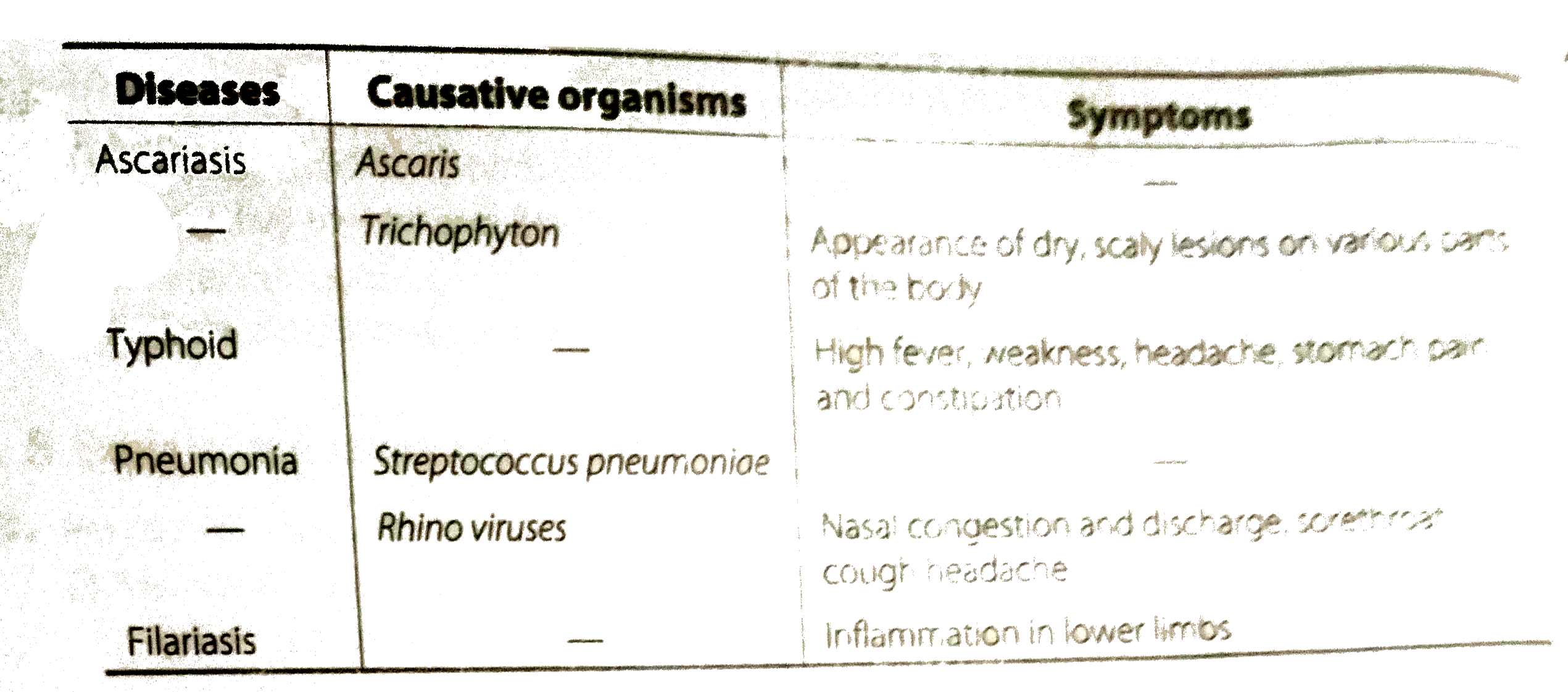Name the causative organism, transmission and symptoms of pneumonia.
Step-by-Step Solution:
1. Causative Organisms of Pneumonia:
- Pneumonia can be caused by various pathogens, primarily bacteria and viruses.
- The most common bacteria responsible for pneumonia include:
- Streptococcus pneumoniae
- Haemophilus influenzae
- Mycoplasma pneumoniae
- Other bacteria such as Staphylococcus aureus and Moraxella catarrhalis can also cause pneumonia.
- Common viruses that lead to pneumonia include:
- Influenza virus
- Coronaviruses (notably during the COVID-19 pandemic)
- Adenoviruses
- Herpes simplex viruses
- Fungi and parasites can also cause pneumonia, but these cases are less common.
2. Transmission of Pneumonia:
- Pneumonia is primarily transmitted through airborne droplets.
- When an infected person coughs or sneezes, tiny droplets containing the pathogens are released into the air.
- These droplets can be inhaled by others, leading to infection.
- Additionally, pneumonia can spread through direct contact with an infected person, such as sharing food or utensils.
3. Symptoms of Pneumonia:
- The symptoms of pneumonia can vary but typically include:
- High fever and chills: A common feature of pneumonia is a sudden onset of high fever accompanied by chills.
- Cough: Patients often experience a persistent cough, which may be productive (producing mucus).
- Shortness of breath: Difficulty in breathing or shortness of breath is common.
- Increased respiratory rate: Patients may breathe faster than normal.
- Mental confusion: Particularly in older adults, pneumonia can lead to confusion or altered mental status.
- Pneumonia can be caused by various pathogens, primarily bacteria and viruses.
- The most common bacteria responsible for pneumonia include:
- Streptococcus pneumoniae
- Haemophilus influenzae
- Mycoplasma pneumoniae
- Other bacteria such as Staphylococcus aureus and Moraxella catarrhalis can also cause pneumonia.
- Common viruses that lead to pneumonia include:
- Influenza virus
- Coronaviruses (notably during the COVID-19 pandemic)
- Adenoviruses
- Herpes simplex viruses
- Fungi and parasites can also cause pneumonia, but these cases are less common.
- Pneumonia is primarily transmitted through airborne droplets.
- When an infected person coughs or sneezes, tiny droplets containing the pathogens are released into the air.
- These droplets can be inhaled by others, leading to infection.
- Additionally, pneumonia can spread through direct contact with an infected person, such as sharing food or utensils.
- The symptoms of pneumonia can vary but typically include:
- High fever and chills: A common feature of pneumonia is a sudden onset of high fever accompanied by chills.
- Cough: Patients often experience a persistent cough, which may be productive (producing mucus).
- Shortness of breath: Difficulty in breathing or shortness of breath is common.
- Increased respiratory rate: Patients may breathe faster than normal.
- Mental confusion: Particularly in older adults, pneumonia can lead to confusion or altered mental status.
Topper's Solved these Questions
- SAMPLE QUESTION PAPER 4BOOK - ICSECHAPTER - SAMPLE QUESTION PAPER 4EXERCISE - PART II
33 Videos
- SAMPLE QUESTION PAPER 3BOOK - ICSECHAPTER - SAMPLE QUESTION PAPER 3EXERCISE - PART II
56 Videos
- SAMPLE QUESTION PAPER 5BOOK - ICSECHAPTER - SAMPLE QUESTION PAPER 5EXERCISE - PART II (SECTION C) All the questions are compulsory.
6 Videos
Similar Questions
Name the causative organism for syphilis.
View SolutionName the causative agent and give any one symptom of Gonorrhoea.
View SolutionWrite the causative agent and the most important symptoms of malaria.
View SolutionWrite the causative agent of filariasis in human. Mention its mode of transmission and symptoms of the disease.
View SolutionWrite about any three communicable diseases, their causes, transmission, effects and symptoms in a tabular form.
View SolutionThe following table shows certain diseases, their causative organisms and symptoms. Fill the gaps.

View Solutionmention any two human diseases caused by round worms. Name their causative agents and their mode of transmission into the human body.
View SolutionMention the name of the causal organism, symptoms and the mode of transmission of the disease Amoebiasis.
View SolutionMention the name of the causal organism, symptoms and the mode of transmission of the disease Amoebiasis.
View SolutionName the causative organism and preventive measures for the following:
Typhoid
View Solution
